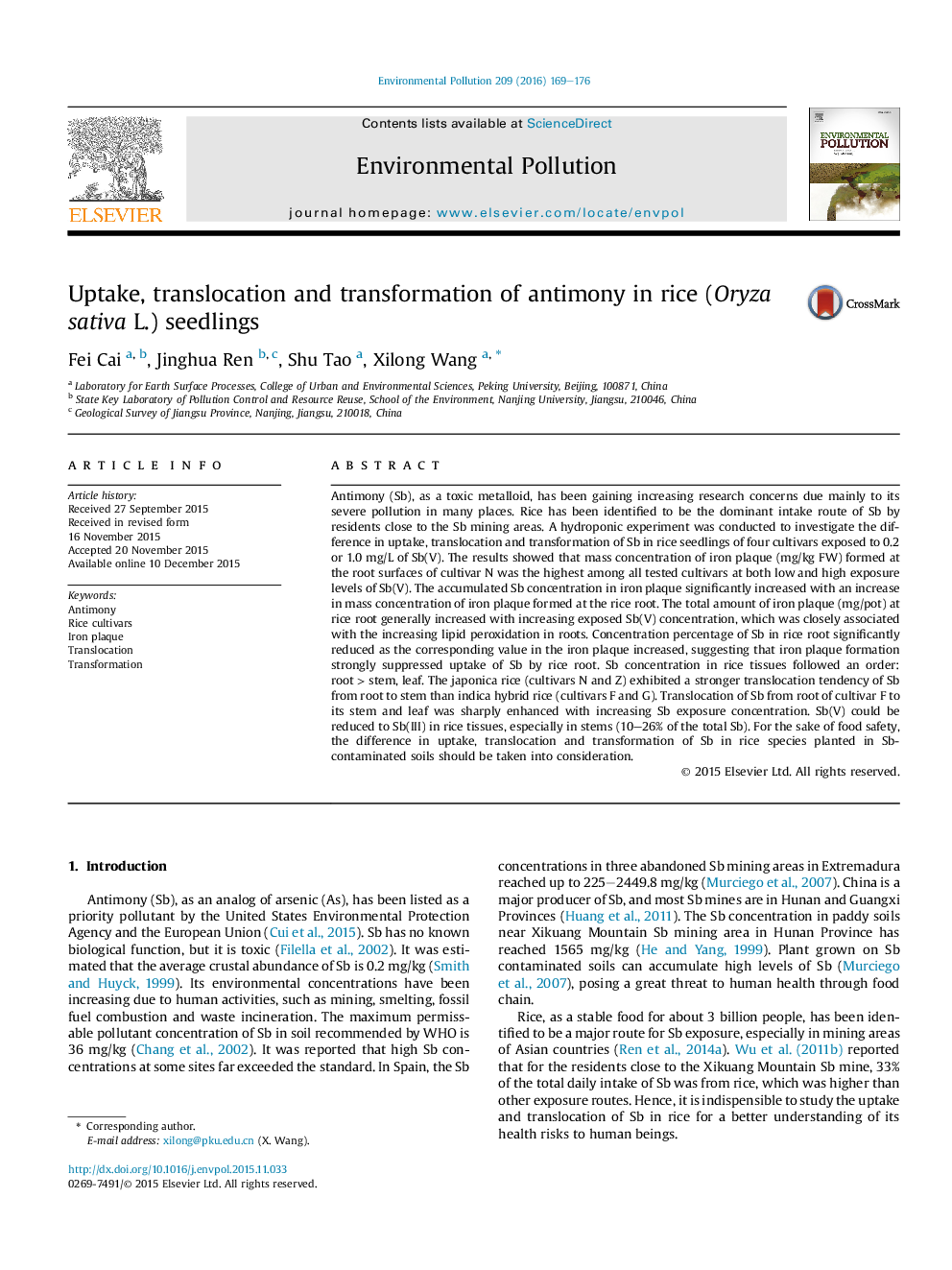| کد مقاله | کد نشریه | سال انتشار | مقاله انگلیسی | نسخه تمام متن |
|---|---|---|---|---|
| 4424277 | 1619164 | 2016 | 8 صفحه PDF | دانلود رایگان |
• Sb(V) caused lipid peroxidation and increased iron plaque formation at root surface.
• The iron plaque may suppress uptake of Sb by rice.
• Cultivars influenced the iron plaque formation and Sb translocation.
• Sb(V) can be reduced to Sb(III) in rice.
Antimony (Sb), as a toxic metalloid, has been gaining increasing research concerns due mainly to its severe pollution in many places. Rice has been identified to be the dominant intake route of Sb by residents close to the Sb mining areas. A hydroponic experiment was conducted to investigate the difference in uptake, translocation and transformation of Sb in rice seedlings of four cultivars exposed to 0.2 or 1.0 mg/L of Sb(V). The results showed that mass concentration of iron plaque (mg/kg FW) formed at the root surfaces of cultivar N was the highest among all tested cultivars at both low and high exposure levels of Sb(V). The accumulated Sb concentration in iron plaque significantly increased with an increase in mass concentration of iron plaque formed at the rice root. The total amount of iron plaque (mg/pot) at rice root generally increased with increasing exposed Sb(V) concentration, which was closely associated with the increasing lipid peroxidation in roots. Concentration percentage of Sb in rice root significantly reduced as the corresponding value in the iron plaque increased, suggesting that iron plaque formation strongly suppressed uptake of Sb by rice root. Sb concentration in rice tissues followed an order: root > stem, leaf. The japonica rice (cultivars N and Z) exhibited a stronger translocation tendency of Sb from root to stem than indica hybrid rice (cultivars F and G). Translocation of Sb from root of cultivar F to its stem and leaf was sharply enhanced with increasing Sb exposure concentration. Sb(V) could be reduced to Sb(III) in rice tissues, especially in stems (10–26% of the total Sb). For the sake of food safety, the difference in uptake, translocation and transformation of Sb in rice species planted in Sb-contaminated soils should be taken into consideration.
Journal: Environmental Pollution - Volume 209, February 2016, Pages 169–176
